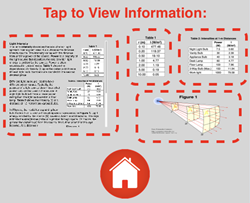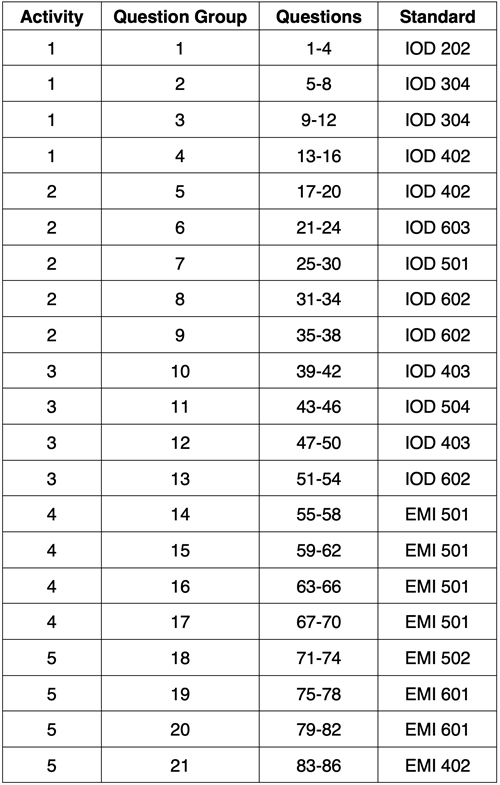About the Science Reasoning Center
 Highly Recommended
Highly RecommendedLike all our Science Reasoning Center activities, the completion of the Light Intensity activity requires that a student use provided information about a phenomenon, experiment, or data presentation to answer questions. This information is accessible by tapping on the small thumbnails found on the bottom right of every question. However, it may be considerably easier to have a printed copy of this information or to display the information in a separate browser window. You can access this information from this page.
The Standards
The Light Intensity uses two different tables to present information regarding the relationship between light intensity and the distance from the source and between light intensity and the power of the source at fixed distances from the source. A model for understanding the inverse square law is discussed. Questions target a student's ability to select data from a table (or two), to interpolate and extrapolate from information given in a table, to draw conclusions consistent with presented information, to identify the relationship among the variables, and to identify statements that are consistent with both the model and the data.
Success with Light Intensity requires some degree of understanding or proficiency with respect to ...
- Asking Questions and Defining Problems (Science and Engineering Practice 1.8)
Define a design problem that involves the development of a process or system with interacting components and criteria and constraints that may include social, technical and/or environmental considerations. - Developing and Using Models (Science and Engineering Practice 2.3)
Develop, revise, and/or use a model based on evidence to illustrate and/or predict the relationships between systems or between components of a system. - Developing and Using Models (Science and Engineering Practice 2.4)
Develop and/or use multiple types of models to provide mechanistic accounts and/or predict phenomena, and move flexibly between model types based on merits and limitations. - Planning and Carrying Out Investigations (Science and Engineering Practice 3.5)
Make directional hypotheses that specify what happens to a dependent variable when an independent variable is manipulated. - Analyzing and Interpreting Data(Science and Engineering Practice 4.1)
Analyze data using tools, technologies, and/or models (e.g., computational, mathematical) in order to make valid and reliable scientific claims or determine an optimal design solution. - Using Mathematics and Computational Thinking (Science and Engineering Practice 5.3)
Use mathematical, computational, and/or algorithmic representations of phenomena or design solutions to describe and/or support claims and/or explanations. - Patterns (Crosscutting Concept 1.5)
Mathematical representations are needed to identify some patterns. - Scale, Proportion, and Quantity (Crosscutting Concept 3.2)
Algebraic thinking is used to examine scientific data and predict the effect of a change in one variable on another (e.g., linear growth vs. exponential growth). - Systems and System Models (Crosscutting Concept 4.3)
Models can be used to predict the behavior of a system, but these predictions have limited precision and reliability due to the assumptions and approximations inherent in models.
While the Light Intensity activity addresses the six NextGen Science and Engineering Practices and the three Crosscutting Concepts above, the task draws its greatest inspiration from ACT's College Readiness Standards for Science Reasoning. The task consists of 86 questions organized into 1213 Question Groups and spread across the five activities. Two strands (Interpretation of Data - IOD and Evaluation of Models, Inferences, and Experimental Results - EMI) of the College Readiness Standards are addressed in this activity. The code given for the standard includes three letters to indicate the strand and three numbers to indicate the specific standard within that strand. Higher numbers are indicative of more complex science reasoning skills. The relationship between the questions and the standards is as follows:

Complementary and Similar Resources
The following resources at The Physics Classroom website complement the Light Intensity Science Reasoning Activity. Teachers may find them useful for supporting students and/or as components of lesson plans and unit plans.
Concept Builders, Light and Color: Light Intensity
The Calculator Pad, Light Waves: Problem Set LW4
Recommended: Print Passage, Tables, and Graphs
Also see: